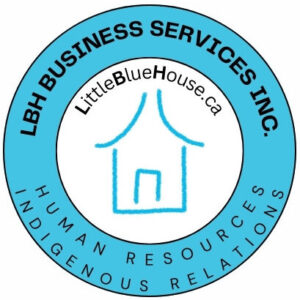This article is part of a series of articles about using organizational feedback to grow organization systems, processes, and policies. To learn more, read our previous article, “What is the role of human resources?“
Getting feedback from owners and managers means creating the right brainstorming environment, asking the right brainstorming questions, and getting owners and managers to be honest. Human Resources must become the facilitator for getting feedback from owners and managers. We all concentrate on getting employee feedback, but getting feedback from owners and managers is equally challenging.
Creating the Right Environment
Owners and managers may be prideful and don’t want to lose face. Creating the proper environment is essential.
Before getting started with any feedback session, be sure to review the organization’s values, vision, and mission. This review will help ground participants to the main reason for any feedback.
Creating the right environment to get feedback from owners and managers involves several key steps:
Build Trust: Foster an atmosphere of trust and confidentiality. Owners and managers need to feel secure in sharing their thoughts and concerns without fear of (Source: Win the Hearts of Your Employees: Building a Safer Construction Site Through Engagement.) judgment or reprisal. Emphasize that feedback is valued and is used constructively.
Open Communication Channels: Establish clear channels for communication. Whether through regular meetings, one-on-one sessions, suggestion boxes, or digital platforms, ensure that owners and managers have accessible ways to provide feedback.
Active Listening: Practice active listening skills. Show genuine interest in what owners and managers have to say, and refrain from interrupting or dismissing their perspectives. Repeat what you’ve heard to demonstrate understanding and ensure clarity.
Encourage Constructive Criticism: Encourage owners and managers to provide constructive criticism by framing feedback as an opportunity for improvement rather than criticism. Emphasize the importance of honest, respectful communication for the growth and success of the organization.
Set Expectations: Communicate the purpose and objectives of seeking feedback from owners and managers. Let the owners and managers know how input will be used and what changes may result from their feedback. Establishing clear expectations helps align efforts and encourages meaningful contributions.
Ensure Anonymity (if necessary): If Anonymity is essential for honest feedback, provide options for owners and managers to submit feedback anonymously. This can help overcome hesitance or fear of repercussions and encourage candid responses.
Act on Feedback: Demonstrate a commitment to acting on the feedback received. Owners and managers are more likely to continue providing input if they see tangible results from their suggestions. Follow up on feedback with concrete actions and communicate progress transparently.
Continuous Improvement: Promote a culture of continuous improvement where feedback is not just a one-time event but an ongoing process. Regularly solicit feedback, assess progress, and adjust accordingly to ensure the feedback loop remains active and influential.
By implementing these strategies, you can create an environment (Source: Blog – Cheetah.) where owners and managers feel comfortable sharing feedback, enhancing collaboration, innovation, and organizational growth.
Asking the Right Questions
When facilitating a brainstorming session with owners and managers, asking questions that stimulate creative thinking, promote open dialogue, and encourage innovative ideas is essential.
Here are some top creative questions you can use:
Vision and Strategy:
- “What is our long-term vision for the company, and how can we innovate to achieve it?”
- “How can we adapt our strategies to capitalize on emerging trends and market opportunities?”
- “What disruptive technologies or industry shifts should we anticipate, and how can we position ourselves ahead of the curve?”
Organizational Culture and Engagement:
- “How can we enhance employee engagement and create a more inclusive workplace culture?”
- “What initiatives or activities can we implement to promote creativity, collaboration, and a sense of belonging among our teams?”
- “How can we better recognize and reward exceptional performance and contributions?”
Operational Efficiency and Improvement:
- “Where do you see inefficiencies or bottlenecks in our current processes, and how can we streamline or automate them?”
- “What innovative solutions can we explore to reduce costs, increase productivity, or improve resource allocation?”
- “How can we leverage data analytics and insights to make more informed decisions and drive operational excellence?”
Customer Experience and Satisfaction:
- “What are our customers’ emerging needs and preferences, and how can we exceed their expectations?”
- “How can we leverage technology to personalize the customer experience and build stronger relationships?”
- “What innovative products, services, or features can we introduce to differentiate ourselves in the market?”
Sustainability and Social Responsibility:
- “How can we integrate sustainability principles into our business practices and contribute to environmental stewardship?”
- “What initiatives can we undertake to support local communities and address social challenges?”
- “How can we align our corporate values with the broader sustainability and social responsibility goals?”
Risk Management and Resilience:
- “What potential risks or disruptions do we need to anticipate, and how can we enhance our resilience to mitigate them?”
- “How can we proactively identify and address emerging business continuity and reputation threats?”
- “What contingency plans or crisis response strategies should we develop to ensure organizational resilience?”
The questions above are designed to spark creative thinking, encourage diverse perspectives, and generate actionable ideas to drive meaningful organizational change and innovation. Tailor them to suit your brainstorming session’s specific context and objectives, and encourage participants to think outside the box and challenge conventional wisdom.
Be Honest
Encouraging honesty and active participation from owners and managers in the brainstorming process requires creating a supportive and inclusive environment where they feel comfortable expressing their thoughts and ideas without fear of judgment or (Source: The Importance Of Psychological Safety In The Workplace.) reprisal.
Here are some strategies to achieve this:
Set the Tone: As the facilitator, establish a tone of openness, respect, and non-judgment from the outset. Emphasize that all ideas are welcome and that there are no “wrong” answers in brainstorming.
Lead by Example: Demonstrate honesty and vulnerability by openly sharing your ideas and perspectives. This sets a positive example and encourages others to do the same.
Create Psychological Safety: Foster an atmosphere of psychological safety where participants feel secure in taking interpersonal risks, such as sharing unconventional ideas or challenging the status quo. Assure them that their contributions will be valued and respected.
Use Icebreakers and Warm-up Activities: Start the session with icebreakers or warm-up activities to help participants feel more comfortable and connected. This can help break down barriers and facilitate (Source: Building Stronger Teams: Choosing Effective Team-Building Exercises for the Summer Season | by Philip Keezer | Medium.) more open communication.
Encourage Active Listening: Encourage active listening by providing opportunities for participants to build on each other’s ideas, ask clarifying questions, and seek understanding before offering their input.
Use Anonymous Contributions: If appropriate, allow participants to submit ideas anonymously. This can mitigate hierarchy or power dynamics concerns and encourage more candid participation.
Provide Structure: Use structured brainstorming techniques such as mind mapping, round-robin, or the nominal group technique to ensure that everyone has an equal opportunity to contribute and that no single voice dominates the discussion.
Address Power Dynamics: Acknowledge and address any power dynamics within the group. Encourage leaders to actively solicit input from quieter participants and ensure everyone’s voice is heard.
Offer Positive Reinforcement: Provide positive reinforcement and validation for honest contributions, regardless of their perceived merit. Celebrate diversity of thought and encourage participants to collaboratively build on each other’s ideas.
Follow-Up: After the brainstorming session, follow up with participants individually to gather additional feedback or ideas they may have felt uncomfortable sharing in the group setting. This demonstrates a continued commitment to listening and valuing their input.
By implementing these strategies, a facilitator can create a conducive environment where owners and managers feel empowered to participate honestly in the brainstorming process, leading to more meaningful and innovative outcomes.
Human Resources is the Facilitator
Facilitating brainstorming sessions as a Human Resources professional, especially when not the subject matter expert, requires a delicate balance of guiding the discussion while empowering owners and managers to contribute their expertise.
Here’s how to best facilitate:
Preparation and Research: Familiarize yourself with the topics or objectives of the brainstorming session beforehand by researching to understand relevant concepts, terminology, and industry trends to facilitate informed discussions.
Establish Clear Objectives: Clearly define the purpose and objectives of the (Source: Is It Time to Switch To Asynchronous Meetings?.) brainstorming session to align participants’ efforts. Communicate the desired outcomes and any specific challenges or opportunities the session aims to address.
Create a Safe Environment: Foster a safe and inclusive environment where (Source: Unlocking Success: Effective Strategies for Managing Team Performance and Accountability in Agile Methodology – Soject.) owners and managers feel comfortable sharing their insights and ideas. Emphasize that all contributions are valued and encourage active participation from everyone.
Set Ground Rules: Establish rules for the brainstorming session to ensure productive and respectful interactions. Encourage participants to listen actively, suspend judgment, and constructively build on each other’s ideas.
Facilitate Discussion: Use facilitation techniques such as open-ended questioning, active listening, and paraphrasing to guide the discussion without dominating it. Encourage owners and managers to share their expertise and perspectives freely.
Encourage Diverse Perspectives: Facilitate discussions that incorporate diverse perspectives and experiences. Prompt participants to consider viewpoints different from their own and explore alternative approaches to problem-solving.
Manage Time Effectively: Keep the discussion focused and on track by managing time effectively. Set specific time limits for each topic or activity and ensure critical points get addressed within the allocated timeframe.
Capture Ideas and Insights: Record and document ideas, insights, and key takeaways from the brainstorming session in real time. Use visual aids like flip charts, whiteboards, or digital collaboration tools to capture and organize information for future reference.
Facilitate Consensus-Building: Facilitate consensus-building and decision-making processes by summarizing key points, identifying common themes, and soliciting participant feedback. Encourage owners and managers to work together to prioritize ideas and develop actionable plans.
Follow-Up and Support: Follow up with participants after the brainstorming session to provide support, gather additional feedback, and facilitate the implementation of agreed-upon initiatives. Offer resources or assistance as needed to support ongoing efforts and ensure accountability.
By adopting these approaches, a Human Resources professional can effectively facilitate brainstorming sessions with owners and managers, leveraging their expertise and insights to drive meaningful outcomes for the organization.
What’s Next?
If you have an HR Advisor or HR Department, task them with getting this feedback from owners and managers. If you are the owner or only manager in a small organization, you should brush up on your brainstorming skills. Consider these top Brainstorming books on Amazon.
If you need HR support for your small or medium organization, click here to learn about our services.
If you have a small budget, join our Patreon for as little as $5 per month to ask unlimited HR questions.


